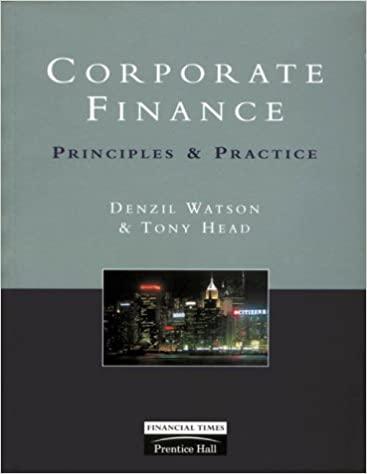Question
The Rock Company operates in a two-period world. The current (t = 1) fair market value of its assets is 100. At t = 2,
The Rock Company operates in a two-period world. The current (t = 1) fair market value of its assets is 100. At t = 2, the assets will be worth either 40 or 200, and these outcomes are equally likely. The risk-free discount rate is zero. The firms capital structure consists of equity as the residual claim and debt which carries a promise to pay 60 at t = 2. The fair market value of the equity at t = 1 is 52.50, and the fair market value of the debt is 47.50. This world has many traded financial assets with a wide array of risk characteristics.
Suddenly, in t = 1, expectations of the future change for the worse. All future payoffs drop by 20 percent. Thus, the outcomes of 40 and 200 are now only 32 and 160. Given that all future outcomes fall in value by 20 percent, it is reasonable to assume that the current (t = 1) fair market value of the firms assets has dropped to 80. However, the debt contract still promises a payment of 60 and the risk-free discount rate is still zero.
Given this change, calculate the new value of equity at t = 1 and new value of debt at t = 1
Step by Step Solution
There are 3 Steps involved in it
Step: 1

Get Instant Access to Expert-Tailored Solutions
See step-by-step solutions with expert insights and AI powered tools for academic success
Step: 2

Step: 3

Ace Your Homework with AI
Get the answers you need in no time with our AI-driven, step-by-step assistance
Get Started


